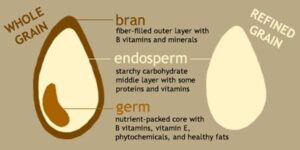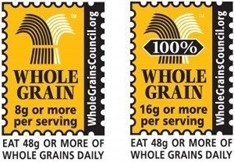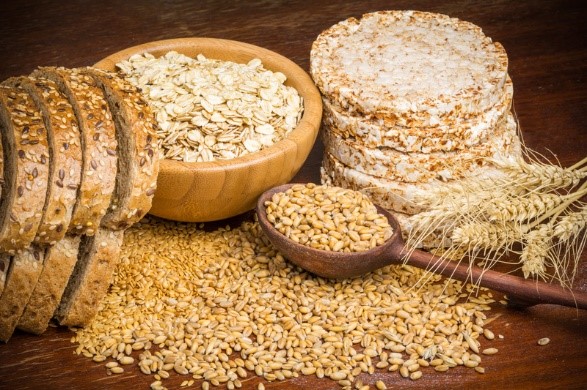Are you consuming enough whole grains? The 2020-2025 Dietary Guidelines for Americans recommends that at least half of the grains you consume are whole grains. What does the term whole grain mean, and what exactly are whole grain foods?
A grain is a whole grain if it contains the three key parts of a seed: the bran, germ and endosperm. In other words, whole grains have not had key nutrients stripped away in the manufacturing process. All grains start out as whole, but to extend shelf life and give a finer texture, some grains are milled and processed, causing them to lose one or more of their original parts.

So, what is so special about whole grains? Whole grains are full of heart-healthy soluble fibers that control appetite and regulate both blood pressure and cholesterol levels. The fiber content allows your body to slowly digest whole grains into usable energy. In contrast, refined grains have been stripped of that fiber and digest quickly, causing your blood sugar to spike much faster.
White rice, for example, is stripped of the bran and germ. This is problematic because the fiber, protein and nutrients live there. Sometimes, you’ll see refined grains that have been enriched, meaning certain vitamins have been added back in. However, fiber is not added back into enriched grains. By consuming products like rice, pasta, flour and bread in their non-whole grain form, you are missing out on key nutrients and disserving your body.
Additionally, whole grains are a healthy complex carbohydrate — the body’s key source of energy. See the chart below for a breakdown of the health benefits of whole grains.
| Health Benefits of Whole Grains | |
| Helps reduce the risk of: | Provides your body with: |
| Heart disease | B vitamins and vitamin E |
| Type 2 diabetes | Minerals (iron, magnesium, selenium, zinc, copper) |
| Stroke | Dietary fiber |
| Some cancers | Antioxidants |
| High blood pressure | Phytochemicals |
| High cholesterol | Complex carbohydrates |
| Proteins | |
Whole grains are delicious and nutritious, and there are many ways to incorporate them into your diet. Here are a few whole grains to try:
• Amaranth
• Barley
• Brown rice
• Buckwheat
• Bulgar
• Corn
• Kamut
• Millet
• Quinoa
• Rye
• Oats
• Sorghum
• Spelt
• Teff
• Triticale
• Wheat Berries
• Wild Rice
• Whole wheat flour
• 100% whole grain bread
• 100% whole wheat bread
• 100% whole wheat pasta
To make sure you are purchasing 100% whole grain foods at the grocery store, search the packaging for the yellow 100% whole grain stamp and following phrases:

• Stone ground whole grain
• 100% whole grain
• 100% whole wheat
Please note: Items are often marketed as “made with whole grains,” “whole wheat” or “multigrain” when they only contain a small amount of whole wheat. Be a detective! Look for that 100% indicator or check the ingredient list.
Making the switch to whole grains is a simple way to maximize your nutrition and reap countless health benefits. Bon appétit!
by: Megan Petriello


Most Commented